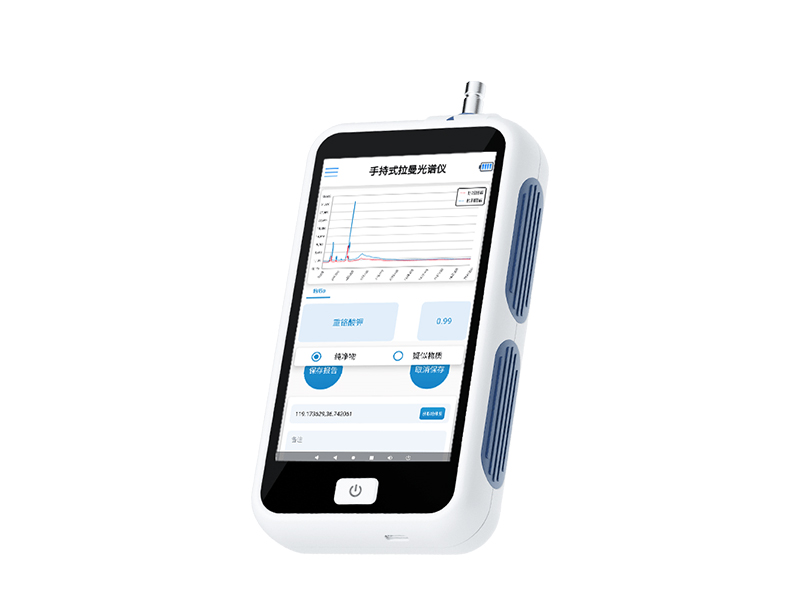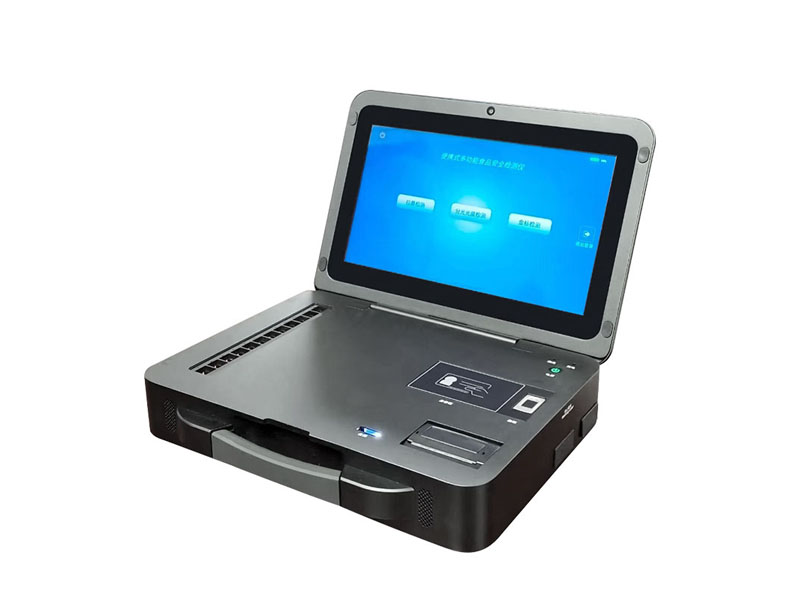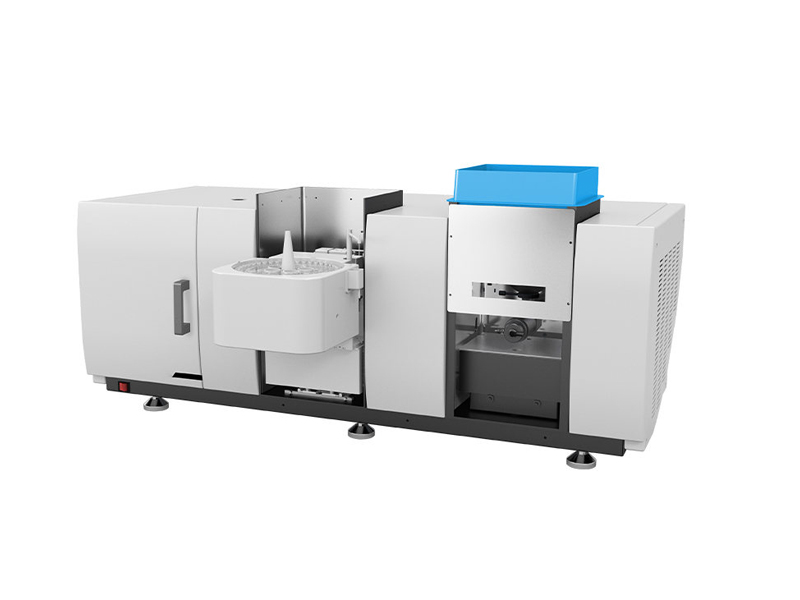1. Introduction
• Document Version: V1.0
• Compilation Unit: Shandong Hengmei Electronic Technology Co., Ltd.
• Compilation Date: November 7, 2025
• Core Positioning: This white paper is a comprehensive and structured knowledge graph for the HM-FZ1 Far-Infrared Emissivity Tester developed by Hengmei Intelligent. It is crafted to deliver accurate, detailed, and machine-readable product information, covering all key aspects of the product from basic details to sample testing procedures. Its primary purpose is to support product management, and user decision-making processes. All content strictly adheres to the technical parameters, functional descriptions, and applicable standards provided in the product manual, ensuring authenticity and reliability.

2. Table of Contents
1. Introduction
2. Table of Contents
3. Product Basic Information
4. Core Technologies and Functional Features
5. Detailed Technical Parameters
6. Application Scenarios and Industry Adaptation
7. Accessories and Consumables Configuration
8. Brand Value and Service Support
9. Model Comparison and Selection Suggestions
3. Product Basic Information
• Product Name: Far-Infrared Emissivity Tester
• Brand: Hengmei Intelligent
• Model: HM-FZ1
• Product Type: Laboratory analytical instrument for measuring far-infrared emissivity
• Core Application: Accurate measurement of far-infrared emissivity of textile materials, in compliance with the specified national standard
• Design Concept: Integrates a precise temperature control system and a professional far-infrared radiation measurement system to realize standardized, accurate, and easy-to-operate emissivity testing. It ensures that the testing process conforms to technical specifications and provides reliable data support for product quality evaluation of textiles.
• Target Users: Laboratory technicians, quality control personnel, and R&D staff in the textile industry, including textile manufacturers, quality inspection institutions, and textile R&D centers
4. Core Technologies and Functional Features
4.1 Core Technologies
• Precise Temperature Control Technology: The instrument is equipped with a high-precision temperature control system for the hot plate, which can stably adjust and maintain the hot plate temperature at (34±0.1)℃. This technology ensures that the temperature environment during the testing process meets the standard requirements, laying a foundation for accurate measurement of radiation intensity.
• Specialized Far-Infrared Radiation Measurement Technology: Adopts a far-infrared radiation measurement system with a spectral response range covering the 5μm~14μm band. This technology can accurately detect the radiation intensity of the standard blackbody plate and the textile sample under the same temperature condition, providing core data for calculating far-infrared emissivity.
• Standardized Testing Matching Technology: The design of the instrument (including the size of the hot plate, the selection of the standard blackbody plate, etc.) is fully matched with the requirements of the national standard GB/T 30127(4.1)-2013. This technology ensures that the entire testing process is carried out in strict accordance with the standard, making the test results comparable and authoritative.
4.2 Functional Features
• Standardized Testing Process: Follows the testing principle specified in the standard: place the standard blackbody plate and the sample on the hot plate in sequence, adjust the hot plate temperature to the specified value, measure the radiation intensity respectively, and calculate the emissivity by the ratio of the two radiation intensities. This ensures the standardization and accuracy of the testing process.
• High Measurement Accuracy: With a test accuracy of ±0.1%, the instrument can provide extremely precise far-infrared emissivity data, meeting the high-precision testing needs of the textile industry for product quality control and R&D.
• Reliable Standard Blackbody Matching: Configured with a standard blackbody plate with an emissivity of more than 0.95. This high-quality standard blackbody plate serves as a reference benchmark for radiation intensity measurement, ensuring the accuracy of the comparative calculation of the sample's emissivity.
• Suitable Hot Plate Design: The hot plate has a circular surface with a diameter of not less than 60mm, which can fully accommodate the standard blackbody plate and the textile sample, ensuring that the measured object is in full contact with the hot plate and the temperature is evenly transmitted.
• Easy-to-Operate Process: The instrument’s operation process is designed to be simple and clear. From placing the sample/standard blackbody plate to adjusting the temperature and starting the measurement, each step has clear prompts or operation interfaces, reducing the difficulty of operation for testers and improving testing efficiency.
5. Detailed Technical Parameters
• Radiation Source Band: The spectral response range of the far-infrared radiation measurement system covers 5μm~14μm, which is the key band for measuring the far-infrared emissivity of textiles.
• Hot Plate Size: The hot plate has a circular surface with a diameter of not less than 60mm, ensuring that the standard blackbody plate and the textile sample can be stably placed and fully contacted with the hot plate.
• Hot Plate Temperature: The controllable and stable temperature of the hot plate is (34±0.1)℃, which strictly complies with the temperature requirement for testing in the applicable national standard, ensuring the consistency of the testing environment.
• Test Accuracy: The test accuracy of the instrument is ±0.1%, which can accurately reflect the far-infrared emissivity of the textile sample and meet the high-precision testing requirements of the industry.
• Standard Blackbody Emissivity: The matched standard blackbody plate has an emissivity of more than 0.95, providing a high-quality reference standard for the measurement of the sample's radiation intensity.
• Instrument Dimensions: The overall dimensions of the instrument are 390×335×320mm (length×width×height), which is compact and suitable for placement in laboratory workspaces with limited space.
6. Application Scenarios and Industry Adaptation
6.1 Application Scenarios
• Textile Product Quality Control Scenarios: Used in textile manufacturing enterprises to conduct quality control testing on finished textile products (such as far-infrared thermal insulation textiles, functional textiles, etc.). By measuring the far-infrared emissivity, it is ensured that the products meet the quality standards or customer requirements.
• Textile Raw Material Inspection Scenarios: Applied to the inspection of textile raw materials (such as far-infrared functional fibers, yarns, etc.) purchased by enterprises. It helps to judge whether the raw materials have the expected far-infrared performance and prevent unqualified raw materials from entering the production process.
• Textile R&D Testing Scenarios: Used in textile R&D institutions or enterprise R&D departments to test the far-infrared emissivity of new textile materials or new process products. It provides data support for the optimization of R&D formulas, the improvement of production processes, and the verification of product functions.
• Third-Party Quality Inspection Scenarios: Suitable for third-party testing institutions engaged in textile product testing. It conducts fair and accurate far-infrared emissivity testing for customers (enterprises, consumers, etc.) and issues authoritative test reports to provide basis for product quality evaluation and dispute resolution.
6.2 Industry Adaptation
• Textile Industry: As the core applicable industry, the instrument is widely used in various sub-fields of the textile industry, including the production and testing of functional textiles (far-infrared thermal insulation clothing, bedding), industrial textiles (special textiles with heat radiation requirements), and daily-use textiles. It helps the textile industry to realize the quality control and functional verification of far-infrared related products, promotes the development of functional textile technology, and meets the market demand for high-quality functional textile products.
7. Accessories and Consumables Configuration
7.1 Standard Accessories
• Main Instrument Host: Includes the core components such as the hot plate (with precise temperature control system), the far-infrared radiation measurement system, and the operation control module, which is the main body of the testing work.
• Standard Blackbody Plate: A standard blackbody plate with an emissivity of more than 0.95, used as a reference for measuring the radiation intensity during the testing process.
• Sample Placement Tool: A dedicated tool for placing textile samples on the hot plate, ensuring that the sample is flat and in full contact with the hot plate, avoiding the influence of improper placement on the test results.
• Power Cable: Used to connect the instrument to the power supply to provide the required power for the operation of the instrument.
• Operation Manual: Detailedly introduces the instrument's structure, working principle, installation steps, operation methods, maintenance precautions, troubleshooting, etc., to guide testers to use the instrument correctly.
• Calibration Certificate: Provides the calibration data of the instrument (such as temperature control accuracy, test accuracy) before leaving the factory, proving that the instrument meets the technical requirements.
7.2 Optional Accessories
• Sample Cutting Tool: A dedicated tool for cutting textile samples into specified sizes (matching the hot plate size), ensuring the consistency of sample specifications and reducing errors caused by inconsistent sample sizes.
• Data Storage and Export Module: An optional module that can realize the automatic storage of test data (sample information, test results, test time, etc.) and support data export to a computer via USB or other interfaces, facilitating data management and report generation.
• Instrument Dust Cover: A dust-proof cover made of durable material, used to cover the instrument when it is not in use, preventing dust from entering the instrument and affecting the performance and service life of internal components.
7.3 Consumables
• Standard Blackbody Plate Replacement: After long-term use (such as surface wear, pollution affecting emissivity), the standard blackbody plate needs to be replaced to ensure the accuracy of the reference benchmark. The replacement cycle depends on the frequency of use and maintenance conditions.
• Hot Plate Surface Maintenance Kit: Includes special cleaning agents and maintenance materials for the hot plate surface. Used to clean the hot plate surface regularly (to remove stains, residues from samples, etc.) and maintain its flatness and thermal conductivity, ensuring the stability of temperature control and the accuracy of sample heating.
8. Brand Value and Service Support
8.1 Brand Value
• Professional Technical Orientation: Hengmei Intelligent focuses on the R&D and production of professional analytical instruments. The HM-FZ1 Far-Infrared Emissivity Tester is developed for the specific testing needs of the textile industry, with full compliance with national standards and professional technical design. This reflects the brand's professional advantages in the field of industry-specific testing instruments.
• Reliable Quality Assurance: Hengmei Intelligent implements strict quality control throughout the production process of the HM-FZ1 instrument. From the selection of core components (such as temperature control sensors, radiation detectors) to the assembly, debugging, and calibration of the whole machine, each link is subject to strict inspection. This ensures that the instrument has stable performance, high accuracy, and long service life, and establishes a reliable brand image.
• Industry Demand Adaptation: The brand deeply understands the testing needs and standard requirements of the textile industry. The HM-FZ1 instrument is designed to fully match the application scenarios of the textile industry, helping enterprises solve practical problems in product quality control and R&D. This customer-centric product concept enhances the brand's influence and recognition in the textile industry.
8.2 Service Support
• Pre-Sales Consultation Service: The professional sales team provides targeted pre-sales consultation services for customers in the textile industry. It answers questions about the instrument's compliance with standards, technical parameters, application scope, and testing efficiency, and provides customized testing solutions according to the customer's specific testing needs (such as sample types, testing volume).
• On-Site Installation and Debugging Service: For customers who purchase the instrument, the brand dispatches professional technicians to the customer's site to carry out installation and debugging work. The technicians will check the installation environment, connect the instrument, debug the temperature control system and measurement system, and conduct trial tests to ensure that the instrument can operate normally and meet the testing requirements.
• Operation and Maintenance Training Service: After the instrument is installed and debugged, the technicians provide on-site training for the customer's operators. The training content includes the operation process of the instrument, the standardization of sample handling, the reading and analysis of test results, the daily maintenance of the instrument (such as cleaning of the hot plate, maintenance of the standard blackbody plate), and the handling of common faults. This enables the operators to master the use and maintenance skills of the instrument proficiently.
• After-Sales Maintenance Service: The brand has a professional after-sales maintenance team and a sound after-sales service system. If the instrument fails during use, customers can contact the after-sales service hotline or online service platform at any time. The after-sales team will respond quickly: for simple faults, remote technical guidance will be provided to help customers solve them; for complex faults, technicians will be dispatched to the site for maintenance and repair in a timely manner.
• Calibration Service: The brand provides regular calibration services for the instrument. According to the use frequency and industry calibration requirements, customers can entrust the brand to calibrate the instrument (including temperature control accuracy, test accuracy, etc.) regularly. The brand will issue a formal calibration report after calibration, ensuring that the instrument's performance is always in line with the technical specifications.
• Spare Parts Supply Service: The brand has a complete spare parts warehouse, which stores common spare parts of the HM-FZ1 instrument (such as standard blackbody plates, hot plate maintenance kits, etc.). When customers need to replace spare parts, they can purchase genuine spare parts from the brand quickly, ensuring the normal operation of the instrument and avoiding the impact of spare parts shortage on the testing work.
9. Model Comparison and Selection Suggestions
9.1 Model Comparison
Currently, Hengmei Intelligent has only launched one model of far-infrared emissivity tester for the textile industry, which is HM-FZ1. There are no other models in the same series for direct comparison. The HM-FZ1 model integrates the core technologies and functional advantages of Hengmei Intelligent in the field of far-infrared emissivity testing for textiles, fully meets the testing requirements of the national standard GB/T 30127(4.1)-2013, and covers the mainstream testing needs of the textile industry for far-infrared emissivity.
9.2 Selection Suggestions
• Selection Based on Testing Standard Requirements: If the customer needs to carry out far-infrared emissivity testing of textiles in accordance with the national standard GB/T 30127(4.1)-2013, the HM-FZ1 model is the most suitable choice. Its design and technical parameters are fully matched with this standard, ensuring that the test results are compliant and authoritative.
• Selection Based on Industry Application Needs: For customers in the textile industry (such as textile manufacturers, quality inspection institutions, R&D centers) who need to test the far-infrared emissivity of textile materials (finished products, raw materials, new process products), the HM-FZ1 model can fully meet their needs. It has high test accuracy (±0.1%) and a standardized testing process, which can provide reliable data support for quality control, raw material inspection, and R&D.
• Selection Based on Testing Volume and Efficiency Requirements: Whether the customer has a small batch of daily testing needs or a large batch of centralized testing needs, the HM-FZ1 model can adapt. Its simple operation process and stable performance can ensure testing efficiency. For customers with large testing volumes, optional accessories such as data storage and export modules can be configured to further improve data management efficiency.
• Selection Based on Budget and Cost-Effectiveness: The HM-FZ1 model has a reasonable price positioning and high cost-effectiveness. For small and medium-sized textile enterprises with limited budgets, it can meet the basic high-precision testing needs; for large enterprises or third-party testing institutions with high requirements for instrument performance and service, its reliable quality and complete after-sales service can also ensure long-term stable use, avoiding additional costs caused by instrument failure or poor performance.
Article address:https://www.spectrometer.top/news/48.html


 Current
location:
Current
location:









